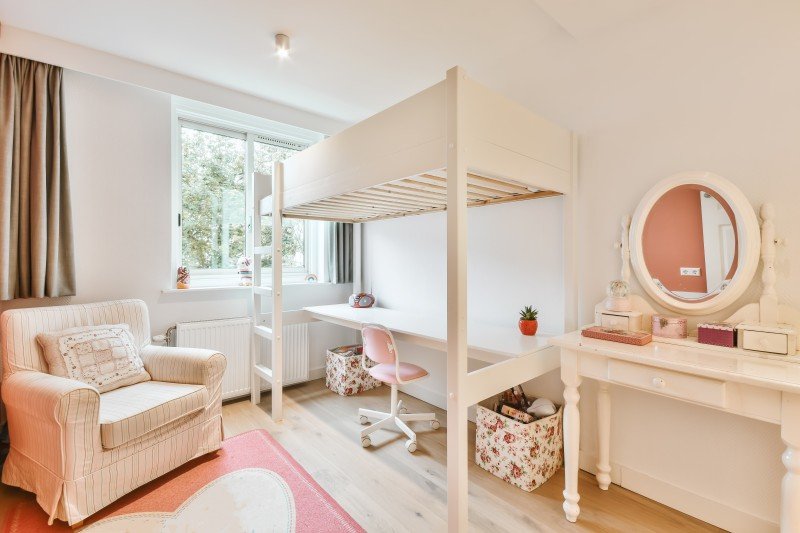12 Companies Leading The Way In Bunk Beds Children's
The Ultimate Guide to Bunk Beds for Children: Safety, Styles, and Benefits
When it concerns styling a kid's room, moms and dads often deal with the dual difficulty of making the most of space while making sure comfort and performance. Bunk beds have become a popular service that deals with these requirements, using not just sleeping plans however likewise adding to a space's visual. In this comprehensive guide, we will explore different aspects of children's bunk beds, concentrating on their advantages, safety features, styles, and factors to consider for parents considering this purchase.
Tabulation
- Advantages of Bunk Beds
- Safety Features to Consider
- Types of Bunk Beds
- Style and Style Options
- Upkeep Tips
- Regularly Asked Questions (FAQs)
1. Advantages of Bunk Beds
Bunk beds use many benefits for kids and their moms and dads. Here are some key advantages:
Space-Efficiency: Bunk beds are an exceptional option for smaller rooms. By stacking one bed on top of another, more flooring space is available for play, storage, or study locations.
Economical: When kids share spaces, bunk beds can minimize the need for acquiring 2 separate beds, therefore saving cash.
Promotes Social Interaction: Bunk beds can help siblings or good friends bond by sharing a space, producing chances for social development.
Enjoyable Factor: The idea of sleeping “up high” adds a playful element to bedtime, making the transition to sleeping alone simpler for some children.
Versatile Design: Bunk beds can be found in various styles, colors, and designs to match any room theme, allowing for customization that shows the child's character.
2. Safety Features to Consider
Security is paramount when it comes to kids's furniture, particularly when it comes to bunk beds. Here are some important security features to assess:
Safety Feature
Description
Sturdy Construction
Frames made from strong wood or metal are preferred.
Guardrails
Must be at least 5 inches high and extend along both sides of the upper bunk.
Ladder Design
Make sure ladders are safely connected and have non-slip steps.
Bed mattress Size & & Fit
Should fit comfortably within the frame to prevent gaps.
Weight Limit
Always adhere to the manufacturer's weight limit recommendations.
3. Types of Bunk Beds
Bunk beds can be found in a number of designs, accommodating various requirements, choices, and room sizes. Here are some common types:
Standard Bunk Bed: The the majority of standard type, with one bed on top of another.
Loft Bed: Features a high upper bed with space underneath for a desk or play area.
Futon Bunk Bed: Combines a leading bunk with a futon on the bottom, supplying versatility for seating and sleeping.
L-Shaped Bunk Bed: This style has the top bunk set at a perpendicular angle to the bottom, producing a small corner location.
Triple Bunk Bed: Accommodates three kids utilizing stacked beds, perfect for large households or slumber parties.
4. Design and Style Options
When it pertains to selecting a design for kids's bunk beds, the options are practically unlimited. Here are some popular styles:
Traditional Style: Often made of wood, these bunk beds feature elaborate information and are best for timeless or rustic-themed rooms.
Modern Style: Characterized by tidy lines and minimalist styles, contemporary bunk beds can be made of metal or wood.
Themed Bunk Beds: Some brand names use bunk beds formed like castles, vehicles, or play houses, making bedtime less of a chore.
Convertible Bunk Beds: These can be separated into 2 private beds, using flexibility as kids grow.
Colorful Options: Bunk beds in lively colors can add a sense of delight and playfulness to any room.
5. Upkeep Tips
Maintaining a bunk bed is vital for durability and security. Here are some ideas:
Regular Inspections: Check for loose screws or bolts every few months and tighten them as required.
Cleaning up: Wipe down frames frequently to avoid dust build-up; consider utilizing a vacuum for hard-to-reach areas.
Mattress Care: Rotate mattresses frequently and use protective covers to lengthen their life.
Enjoy for Wear and Tear: Look for any indications of damage in the wood or metal and think about replacing parts if needed.
Teach Kids Safety Rules: Encourage kids to use ladders properly and guarantee they understand the security functions of their bed.
6. Regularly Asked Questions (FAQs)
Q1: What age is suitable for oversleeping a top bunk?
A1: Typically, children aged 6 and older are suggested for upper bunk sleeping, as they have the necessary motor skills to climb securely.
Q2: Do bunk beds feature a bed mattress?
A2: Most bunk beds are sold as frames just, so you will need to purchase bed mattress separately. Ensure that the mattress fits the frame comfortably.
Q3: Can bunk beds be separated later on?
A3: Many designs permit conversion into 2 specific beds, providing versatility for future needs.
Q4: How can I ensure my child's security on a bunk bed?
A4: Comply with safety requirements and ensure guardrails, a durable frame, and a protected ladder remain in location.
Q5: Are there weight limits on bunk beds?
A5: Yes, always inspect the producer's specs relating to weight limitations to make sure safety.
Bunk beds for children can serve multiple purposes while ensuring security and design. With mouse click the up coming website and models readily available on the market, parents can discover an unit that not just optimizes bedroom space but likewise shows their kid's unique tastes. Just like any furnishings, comprehending security functions, maintenance, and how they suit a kid's way of life will make sure that these beds stay a useful furniture option for many years to come.
Through careful factor to consider and adherence to security guidelines, bunk beds can provide a long-lasting, fun, and functional sleeping option that kids love.
